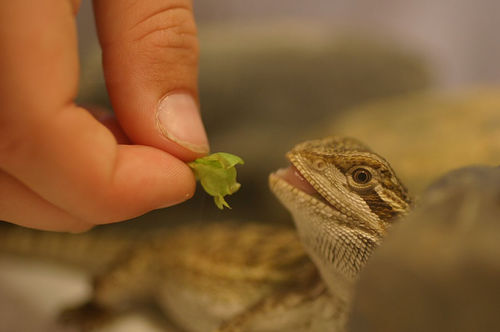A Beginner's Guide to Clint's Reptiles Bearded Dragon: Care, Diet and More
Meet Clint’s Reptiles Bearded Dragon – Your New Pet!
Are you considering adopting a reptile as your new pet? If yes, then Clint’s Reptiles Bearded Dragon might be a perfect match for you! Known for their docility, easy maintenance, and friendly demeanor, Bearded Dragons make great companions for beginners and experienced reptile owners alike.
In this beginner’s guide, we will cover everything you need to know about caring for a Clint’s Reptiles Bearded Dragon, including diet, environment, and handling.
The Basics of Bearded Dragon Care
Before bringing home your new pet, it’s essential to understand some basic facts about Bearded Dragons. These reptiles are native to Australia and are, on average, 18 to 24 inches long. Adult Bearded Dragons can live up to 20 years, so it is a long-term commitment.
Creating the Perfect Environment
Clint’s Reptiles Bearded Dragon requires a suitable environment for them to thrive. In this case, you need to provide a comfortable and spacious habitat where they can bask, climb, and hide. You ought to consider a glass terrarium—a 40-gallon tank—one of the best options for your pet.

Make sure to add some substrates such as reptile carpet, paper towels, slate tiles, or textured vinyl tiles to the bottom of the tank to help regulate humidity and make cleaning more comfortable.
Lighting and Heating
Bearded Dragons require adequate lighting and heat to sustain their health. A UVA/UVB bulb that provides 10-12 hours of light per day is necessary. The light keeps them healthy and prevents metabolic bone disease. They also require a basking spot at a temperature of 100°F to 110°F, where they can go to warm themselves up.

Maintaining the Right Temperature
Ensure that the overall temperature in the terrarium is around 80°F to 85°F during the daytime and between 70°F to 75°F at night. It would be best if you also had a thermometer and hygrometer to monitor the temperature and humidity in the terrarium regularly.
Feeding your Bearded Dragon
Clint’s Reptiles Bearded Dragon is omnivorous, meaning they eat both animal and plant matter. The diet consists of mainly vegetables and insects. However, avoid feeding them prey that is too big because these reptiles have a limited jaw opening. The prey must fit the size of the distance between their eyes.

You can feed Bearded Dragons insects such as crickets, roaches, and mealworms, but do not offer wild insects since they can transmit diseases. Vegetables can include fresh kale, collard greens, grated carrots or sweet potato, green beans, and zucchini. Feed a variety of vegetables daily and avoid feeding them spinach or iceberg lettuce.
Bonding and Handling
The good thing about Clint’s Reptiles Bearded Dragon is their ability to bond with humans quickly. They are also docile and enjoy being picked up and handled. However, you need to approach them gently and slowly, avoiding sudden movements that may frighten them. Start by petting them on the head, and once they get used to you, you can start holding them comfortably. It’s also vital for you to wash your hands both before and after handling them.
Conclusion
Clint’s Reptiles Bearded Dragons are friendly, docile, and low-maintenance pets that make excellent companions for beginners. As long as you meet their basic needs, such as providing a comfortable habitat, adequate lighting, heating, and feeding them a balanced diet, your pet will live a long and happy life. With patience and care, you’ll soon bond with your new reptile!
